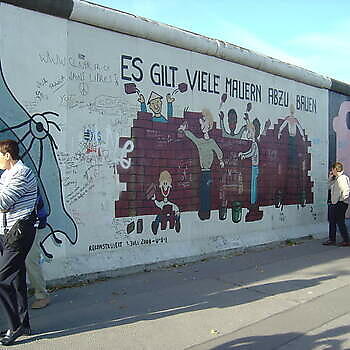The Cold War
In Europe, the borders between East and West had always been clear during the Cold War, but this division was also visible in the 'Third World'. The notion of the ‘Third World’ was used during the Cold War to refer to countries that did not belong to the Western countries (First World) or the Soviet Union (Second World). Both East and West tried to gain as much influence as possible in the Third World. This proved complicated because many countries frequently shifted their loyalty.
The Soviet Union used its anti-colonialism stance to persuade countries to join its side. During this period, many former colonies were fighting for their independence. In addition, the often-precarious socio-economic situation in many countries provided fertile ground for radical ideas. The West tried to find allies by providing economic support in the form of trade concessions, loans, and development aid. All of this was to prevent the socio-economic situation from deteriorating so badly that radical leftist ideas would prevail.
After the US withdrew from the Vietnam War, Western countries stayed in the background for a while. However, this changed in the 1980s when the US decided to return to take the lead among the Western countries. This brought much success faster than expected. Gorbachev decided to start a strategic retreat from the Soviet Union from 1986, partly forced by economic problems. First, the Soviet Union withdrew from conflicts in the Third World, and then it also let go of many Eastern European countries.
The fall of the Berlin Wall
The fall of the Berlin Wall in 1989 brought Eastern and Western Europe closer together. Eastern European economies opened up to free market thinking. Human rights and representative democracy were seen as the standards in this new Europe. With the fall of the wall, the term 'Third World' also disappeared. Despite this term, the ties between these 'Third World countries' were not deep. The commonalities were usually only based on the Cold War and (neo-)colonialism.
Aid for Eastern Europe
It turned out that the situation in the former Soviet Union was much worse than expected. Many people lived in poverty and had little or no access to social services because of corruption. The question arose whether Eastern Europe needed development aid itself. Aid was certainly provided, but for the Netherlands, (financial) support for Eastern Europe did not fall under development aid. This was because, for the Netherlands, development aid equaled poverty reduction. The aid provided to Eastern Europe mainly came from security policy and other foreign policy motives with the hope of a united Europe. There were therefore several conditions attached to this aid. Countries were required to:
- be on the way to a pluralistic democracy
- respect human rights
- have a market economy (or be working on one).
Many Eastern European countries experienced economic setbacks, which led to the possibility of destabilization, both within these countries and within Europe. This brought the motives for the Netherlands to offer aid to Eastern Europe close to the aid provided to the Third World during the Cold War.
The political and economic restructuring processes cost Eastern Europe a lot of money, which in turn came at the expense of the aid they normally provided to developing countries. Eastern Europe had always been a substantial source of aid. For this reason, the (trilateral) West-East-South program was introduced to offset the negative effects for countries that were heavily dependent on Eastern European aid.
The Netherlands also participated in international initiatives to encourage the development of Eastern European countries after the fall of the Berlin Wall. In 1991, the European Bank for Reconstruction and Development (EBRD) was established. View the NICC timeline on the Netherlands and the EBRD here.
Globalization
In the early 1990s, the Dutch government expected less involvement with the ‘Third World’ because the East vs. West motive was deemed as no longer or less relevant. Participation in world trade and economic modernization would be more important than the old political divisions. The globalization of economic activities led to national borders becoming increasingly blurred, making countries sometimes more dependent on each other. Capital, knowledge, and labor became increasingly mobile.
Nevertheless, there was a fear that developing countries would become more isolated if they lagged behind in their economic development. As their political importance decreased, developing countries were also much more on their own after the end of the Cold War. This isolation from the rest of the world could lead to tensions and the emergence of new (ethnic) conflicts or terrorist activities. Multilateral cooperation was seen as the solution to this new paradigm, with a leading role for the UN.
Notes:
- Een wereld in geschil: De grenzen van ontwikkelingssamenwerking verkend, J.P. Pronk (1993): Collectie NICC, n. A02992
Sources:
Extra:
